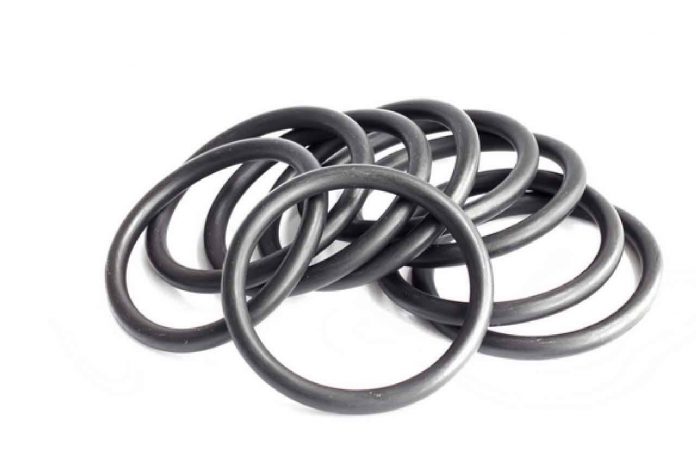High-heat seals typically pose many challenges when creating a product. Often in industrial exhaust systems or gas turbine applications, the seals must be capable of withstanding temperatures of more than 400 degrees Fahrenheit and provide long-term reliability to prevent catastrophic supply chain failures.
The chemical compatibility and other important properties of sealing devices also factor into the correct selection for each application. Even a slight inaccuracy in the chemical compound formulas of o-rings can drastically affect their performance results and longevity. Mica or graphite seals offer high-heat resistance, but they aren’t applicable for each setting since the time intervals and compression requirements vary for different industries.
There are three other main chemical compound families of o-rings:
- Silicone: Performs well with steam, water and petroleum fluids. It is capable of operating within a temperature range of -84 and 232 degrees Celcius. These seals exhibit poor abrasion and pressure strength, and are better suited for static applications rather than dynamic.
- PTFE: A general-performance seal which is highly resistant to surface wear, corrosion, permeation, absorption and abrasion. These seals can operate at temperature ranges between -73 and 260 degrees Celcius, and are more suitable for static applications.
- EPR: Suitable for use with corrosive Skydrol hydraulic fluid, in addition to water, silicone oils, steam, brake fluids and alcohols. These seals exhibit great heat and compression resistance, though they’re prone to wear and tear issues for some applications.
The Top 5 Challenges Faced in High-Heat Sealing
When you add heat to a seal, it typically experiences a faster degradation rate on top of any other environmental or application factors that would affect its long-term reliability. If using the wrong seal in an application, you would experience a list of problems.
1. Joint Failure and Leaks
Materials such as expanded graphite can’t operate well under high temperatures for an extended period of time due to the eventual oxidation of the seal. When a seal made of an organic material operates under a high temperature it becomes susceptible to carbon oxidation, which wears the material down faster. The results of running an oxidation-prone seal in heat for long often results in catastrophic leaks and bolted joint failure.
2. Chemical Incompatibility Corrosion
When the elastomer of a seal is incompatible with system chemicals it can become corroded, leading to poor wear and compression resistance. Extrusion or nibbling around the outside of the seal is a clear sign it has been damaged by chemical corrosion.
3. Insufficient Fit or Pressure
A compression set failure can occur in both static and dynamic applications where either system fluid swells the seal or there is too much pressure exhibited to achieve a complete seal. The heat resistance and physical properties of a seal should match an application so it doesn’t become damaged or flattened on either side.
4. Temperature Threshold Inaccuracies
The elastomer of a seal may begin to harden, crack or evaporate if the temperature of the application is incompatible with the seal’s heat threshold. You can prevent damage to the seal by operating hydraulic systems at a lower temperature, or choose an antioxidant o-ring for the application.
5. Suppliers Don’t Offer the Right Product
Overseas vendors offer a lower cost for their products, but they don’t always offer the best quality and selection of products for a supply chain to operate efficiently. Often, the products bypass a quality control inspection to compensate for the lengthy shipping time, and you don’t get the secondary approval required from an expert. Sourcing with a reliable manufacturer ensures you maintain a stable supply chain management system, which will help you save lead time and additional costs on quality-approved sealing products.
Keep Your Supply Chain Management System Operating Smoothly
Each industry’s seal and o-ring creation, distribution or application is unique. It’s imperative to get the precise temperature resistance, compression strength and production quality right to keep up with supply chain demands. Without a reliable provider, a supply chain management system can completely collapse due to the poor quality of products or not being able to find the sealing device needed for each application.

